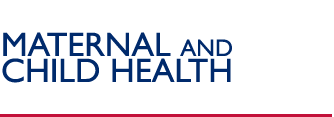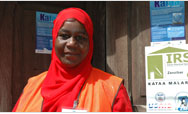Vitamin A Programs
Vitamin A deficiency (VAD) is a global problem. It affects more than 100 million children under age 5 and is responsible for as many as one in four child deaths in areas with high VAD rates. Recent evidence shows that VAD may also increase maternal deaths.
Vitamin A is important for a healthy immune system, good vision, and reproduction. It is found naturally in breast milk as well as meat, dairy products, eggs, and some fruits and vegetables. It can be difficult, however, for mothers and children in developing countries to consume enough vitamin A because of poor availability of, or poor access to, nutrient-rich foods. In addition to dietary deficits, infections and parasites can also reduce the body’s supply of vitamin A.
There are several strategies to improve the vitamin A status of a population, including supplementation and food fortification. For more than 20 years, USAID has supported these activities along with research into the role of vitamin A in reducing maternal and child deaths.
Supplementation
Many countries have been able to achieve high supplementation coverage by distributing vitamin A during polio national immunization days (NIDs). However, as polio eradication draws closer and NIDs are phased out, USAID and collaborating agencies are urging governments to establish vitamin A distribution programs to sustain this coverage. The recent emphasis has been on events such as “vitamin A days” or “child health days” that are scheduled semiannually in order to reach children twice a year. Because vitamin A is stored in the body over long periods, a high dose administered once every six months offers extended protection against common childhood infections and substantially reduces mortality. This method is also extremely cost-effective, with a distribution cost of less than US $1 per year per child.
By delivering a package of periodic services through highly publicized events such as child health days, governments and nongovernmental organizations can use scarce resources to reach out to all children. Services such as de-worming and re-treating bed nets with insecticide to reduce malaria exposure share the twice yearly cycle of vitamin A supplementation. As the benefits of vitamin A
become recognized and appreciated, vitamin A supplementation is proving to be an attractive drawing card for mothers and children to participate in these events and receive these other benefits as well.
During fiscal year 2002, Uganda and the Democratic Republic of the Congo conducted their first national vitamin A distributions, achieving coverage rates of 50 and 57 percent, respectively. There is strong evidence that mothers in countries with new supplementation programs are aware of and appreciate vitamin A and are willing to come twice a year to a central location for their children to receive it. Zambia, Senegal, Morocco, and Ghana have designated entire weeks as “child health weeks” for delivering a package of preventive health care services to children.
Fortification
Fortifying commonly consumed foods with vitamin A is an important complementary approach to reducing VAD that is cost-effective and sustainable. Food fortification can contribute greatly to combating VAD because it is generally socially acceptable, requires few if any changes in food habits, and can be introduced quickly.
In Central America, sugar fortification has been an effective means of reducing VAD in children. With USAID support, Nicaragua recently joined other Central American countries by fortifying all sugar with vitamin A. Sugar has been fortified in Zambia since 1998 following investments by USAID in equipment, training, legislation assistance, and plant- and market-level quality control procedures. In the Philippines, the government has developed a five-year plan to fortify staple and other processed foods. USAID is a major supporter of the plan.
USAID supports continued efforts to improve the vitamin A content of basic foods through research (e.g. “golden rice”) and the increased development and distribution of vitamin A-fortified foods.
USAID's Achievements in Vitamin A Programs
- USAID has helped more than 50 countries establish vitamin A policies and implement programs.
- A number of countries where USAID had a strong role in establishing vitamin A supplementation now conduct their own high-coverage programs with little or no USAID assistance. These countries include Indonesia (72 percent coverage in 2002), Bangladesh (90 percent), the Philippines (76 percent), Nepal (96 percent), and Nicaragua (82 percent).
- In Indonesia, USAID has supported stepped-up vitamin A distribution through technical assistance, training, multimedia campaigns, studies, and surveys. The program saved the lives of an estimated 35,000 children under age 5 in 2001.
- In November 1997, USAID launched VITA, an enhanced global effort that promotes partnerships among governments, donors, and the private sector committed to reducing vitamin A deficiency.
From A to Zinc, USAID Combats Childhood
Illnesses
|


